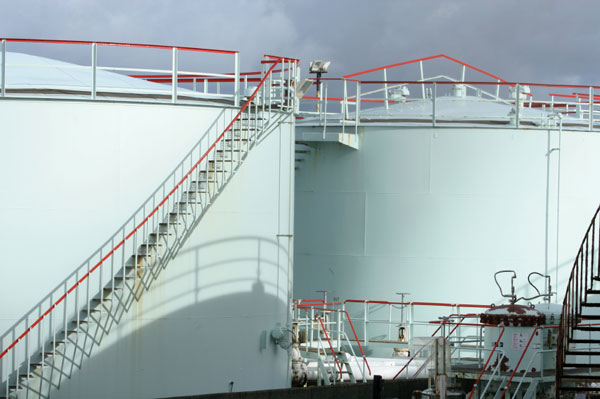Part Two: Toxin Agency Uses ‘Unscientific Method’
First in this two-part series is available here. Correction: This story has been updated to correct an error. The original version incorrectly named
Jul 31, 202052.7K Shares1.5M Views
*Correction: This story has been updated to correct an error. The original version incorrectly named Kinder Morgan as the owner of Southeast Terminals. Kinder Morgan never owned it. *
Two high-profile reports about major public health concerns have put the the Agency for Toxic Substances and Disease Registry, a division of the Centers for Disease Control, at the center of public attention. It was revealed last month that the agency took two years to investigate claims that the government had housed Hurricane Katrina survivors in toxic trailers. In addition, the Center for Public Integrity exposed in February that the agency had suppressed a report on environmental hazards in the eight Great Lakes states. These two cases revealed details about matters of public concern, and citizens’ groups and activists across the nation are now saying these are not anomalies.
Illustration by: Matt Mahurin
In Part One of this two-part report, The Washington Independent discussed evidence of cover-ups in the Great Lakes study and in a health study in eastern Pennsylvania. In Part Two, The Washington Independent looks at the agency’s unscientific and negligent approach in studies in Texas and Georgia.
The Unscientific Method
In 2005, Midlothian, Tex. residents Sal and Grace Mier petitioned the toxic substances agency to conduct a public health study of air pollution from three cement plants and one steel recycling mill. Sal, a retired epidemiologist for the Centers for Disease Control, says he was concerned by high rates of birth defects in the area. The Miers and many of their neighbors suspected a link between local industrial pollution and these birth defects. In Ellis County, home to Midlothian, there were 129 birth defects in 2002 and 107 in 2003, according tothe Texas Dept. of State Health Services.
That is almost twice the state rate.
Finally, almost three years later, the agency did its study. Its findings were “indeterminate.” Bernadette Burden, the agency spokeswoman, said it is now taking public comments. “Once all comments have been received and reviewed,” she said, “the health consultation will be finalized.”
But Burden emphasized that sometimes the agency follows up on inconclusive results — and sometimes it doesn’t.
The agency report saidmost pollution levels appeared low, but that some of the carcinogenic metals and volatile organic compounds could cause elevated risks of cancer. It did not determine the sources. It also made no conclusions about risks of asthma and respiratory illnesses.
Sal Mier says that the agency reached no conclusion because it didn’t want to. He says that the report was based on poor and misleading air monitoring data by the Texas Commission on Environmental Quality. Mier says the monitors were incorrectly located. He points out, for example, that two out of the four air monitors were placed upwind of the four industrial pollution sources. Emissions travel downwind with the prevailing wind pattern, so those living downwind are affected the most. No studies were done to determine whether people downwind have more birth defects or illnesses.
Since the Miers had questions about the quality of the science, they approached six scientists and asked them for independent reviewsof the agency report. One scientist was Dr. Al Armanderiz, an environmental engineering professor at Southern Methodist University in Dallas, Tex.
Armanderiz found several serious faults with the work. Perhaps most important, he found, the report lacked any analysis of the impact of dioxin and furan emissions, both carcinogens. Dioxin exposure has been linked to higher rates of birth defects. In a comment submitted to the ATSDR, Armanderiz pointed to a 2005 study by Harvard University and the University of California — Davis, that put the cement industry at the top of a list of 420 industries that cause an elevated cancer risk. That risk comes almost exclusively from dioxin/furan emissions.
Armanderiz also said that the Texas environmental sampling most probably underestimates mercury emissions. The commission’s sampling collected airborne particles using filters over a six-day period. Any mercury captured by filters will evaporate, he said; and over six days, much of that mercury can be lost. Additionally, some mercury emissions are in the form of gas, and cannot be captured by particulate filters.
Dr. Dennis Cesarotti, a technology professor at Northern Illinois University, is another scientist who did an independent review. Cesarotti took issue with the fact that the agency evaluated only 237 toxic substances out of the 1,000-plus known toxic chemicals regulated by the Environmental Protection Agency.
Furthermore, the ATSDR said it did not test chemicals for carcinogenicity because historical reviews of Midlothian did not find individual aggregate cancer rates to be much higher than the rest of the state’s. But, Cesarotti says, a small cluster can be diluted by a healthier larger population. The study did not investigate whether small clusters exist within the larger area.
A similar situation occurred in Georgia. In 2001, Jill McElheney of Athens, Ga. petitioned the ATSDR when her son, Jarrett was diagnosed with leukemia at age 4. The McElheneys lived across the street from the Southeast Terminals petroleum tank farm that stored fuels onsite. They feared toxic chemicals had migrated into their well water, so they decided to get their water tested.
The water lab found carbon tetrachloride and dichloroethane at unsafe levels. So the Georgia Environmental Protection Division stepped in. The division performed more intensive water tests and found the carcinogen benzene at unsafe levels. Benzene is a petroleum byproduct known to cause leukemia. The well was shut down immediately.
That’s when McElheney petitioned the ATSDR to determine whether hazardous chemicals had caused her son’s illness.
Though the agency’s evaluation acknowledged that the risk of cancer was increased by exposure to contaminated water, its public health consultation results were inconclusive. Seven years later, the agency still hasn’t investigated where the contaminants came from.
McElheney was frustrated by how much the agency left out of its report. It did not investigate the petroleum facility just 500 feet from her home. It gave no information about her son’s possible in utero exposure to toxic chemicals. It didn’t test for lead in the water. It ignored air emissions from the petroleum facility, though inhalation of benzene and other carcinogens can be hazardous.
Olivier Jolliet, an environmental health sciences professor at the University of Michigan, says inhalation is a dangerous means of benzene exposure. “It’s very volatile, so the main exposure is usually through air,” he said. “If it’s in water, what could happen is there could be some shower exposure—with people taking a shower, it could volatize in air. Or there could be direct exposure through drinking water.”
“I had asked the state of Georgia’s Environmental Protection Division early on in the investigation of our toxic groundwater why they had not included the bulk petroleum facilities next to our home as a possible source,” said McElheney. “I was told, ‘We are looking in a different direction.’ That seemed odd because common sense would dictate otherwise. But the fact that they did not rule it out in a scientific way initially raised my suspicions.”
The agency also refused to look into McElheney’s inquiry about six other local children being diagnosed with cancer — five with leukemia. The agency said it was an issue of confidentiality, but McElheney says she had already met the families and talked with them.
McElheney has been writing the ATSDR for seven years asking them to follow up on its incomplete public health consultation. The agency has written back to say that an air exposure pathway for benzene is not significant, though its website says the opposite. No action has been taken to investigate possible sources of benzene.
Looking The Other Way
The ATSDR’s approach to public health studies of environmental sources has proven negligent in all the cases investigated by The Washington Independent. Some members of the local communities say the agency expends energy to make sure no health problem is found.
In New Orleans, the ATSDR took two yearsto investigate claims that government-issued trailers were toxic. Even after the Sierra Club conducted an independent study finding unsafe formaldehyde levels and the Occupational Safety and Health Administration verified those results, the ATSDR continued to look the other way.
Now, in Zavalla, Tex., citizens are worried that the agency will do the same thing. In December 2007, a local physician, Dr. Alexander Orlov, petitioned the agency to investigate whether suspected disease clusters could be tied to environmental sources. Other citizens have done the same. They are awaiting agency action now.
In Zavalla, population 650, three children have been diagnosed with brain stem glioma, a type of brain cancer. Brain stem gliomas, which are central nervous system tumors, typically appear in .32 in 100,000 people, according to the Central Brain Tumor Registry of the United States.
Zavalla residents saythe 150-acre unlined landfill of the Lufkin paper mill could be the source of dangerous metals migrating into their drinking water. The paper mill reported that it dumped waste containing dioxins, lead and aluminum in the landfill until November 2002. A year later, the mill was idled, and recently its owner, AbitibiBowater, announcedits official closing.
Though the mill never moved hazardous waste off-site, the TCEQ signed off on landfill activity. Walter West, a local resident who is a retired NASA engineer, says that the landfill is in clear violation of EPA rules, but the EPA has not responded to requests for oversight. West and Orlov have contacted the EPA several times, and West has filed two formal complaints.
When Orlov started working in Zavallla, he says he was astonished by the number of patients with chronic illnesses who lived near the mill. Eventually, he decided to test the drinking water himself. He also started testing patients for levels of toxic metals. He found the same metals in both the water samples and his patients. “My tests are not conclusive by any means,” he said, “but there’s enough evidence at least to conduct some investigation.”
According to West, though TCEQ issued permits for the mill to do limited dumping per day, it added variances that allowed for unlimited dumping.
Now Orlov, West and other citizens are trying to involve the ATSDR in determining whether health problems could be associated with the unlined landfill. The agency accepted Orlov’s petition request on Jan. 30. Now he and his neighbors are waiting for a public health assessment.
“They’ve said, ‘We received your application and we’ll have a committee look at it,’” said Orlov. “But the sense that I get is that they’re not really going to.”

Paula M. Graham
Reviewer
Latest Articles
Popular Articles

